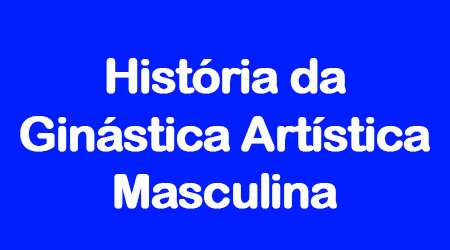By Andrea John
The Olympic Gymnastics, name popularized in Brazil and officialized by the National Sports Council, on the occasion of the approval of the Statutes of the Brazilian Gymnastics Confederation, approved by the Ministry of Education and Culture, and published in the Official Gazette of 16 March 1979. , is also known under other names such as: Solo Gymnastics, Apparatus Gymnastics, Solo Gymnastics and Apparatus, Sports Gymnastics, Artistic Gymnastics (PÚBLIO, p.173, 1998).
At the Assembly of the Brazilian Gymnastics Confederation (CBG), on January 29, 2004, the discussion was raised about which name should appear in the CBG Statute, as the press and the Brazilian Olympic Committee often use the name “Artistic Gymnastics”. ?
It won the maintenance of the name “Olympic Gymnastics” and its continued use in the Statute of CBG and all State Federations affiliated to it.
Historical Evolution of Olympic Gymnastics
A long time ago, probably in ancient Greece, some madman jumped on a bull. Another person, watching what happened, said: “This sounds like fun. I think I’ll jump on that bull, too, and make it a lot better. ”A group of people gathered around to watch that curious activity and were soon applauding the two crazy bull jumpers. This made athletes want to jump, constantly higher, farther, and faster. Some experts were chosen to decide which one was the best; and the most successful athlete in the bull jump received a prize. Jumping competitions on the bull quickly spread. To make things more interesting, other competitions have been included, such as swings on three branches, walking on a narrow path, and stunts. The best athletes were applauded as heroes. It is currently unknown exactly how gymnastics began. But it is known to be one of the oldest sports, around 2500 years of emergence. Historians believe that the first “device” was the bull (GUTMAN, p.1,1996).
The origin of gymnastics dates back to ancient civilizations, which practiced it to maintain and improve health. “Nature incites man to movement, therefore to the mastery of his body, which leads him and leads him to Natural Gymnastics. Therefore, no one is amazed at the distant and universal origins of historians ”(PUBLIO, p.21,1998).
In the eighteenth century, authors such as the philosopher Jean-Jacques Rousseau (1712-1778); Swiss pedagogue Jean-Henri Pestalozzi (1746-1790) and Jean-Bernard Basedow (1723-1778) contributed to the establishment of the pedagogical basis of gymnastics. At the end of this century, Johann-Christoph Guts Muths (1750-1839) developed a system of exercises based on what the Greeks had been doing several centuries earlier. This German author was considered the introducer of the pedagogical-didactic gymnastics, constituting the systematic basis that underpins the educational gymnastics (PUBLIO, p.22,1998).
However, the true father of gymnastics is the German teacher, Frederick Ludwig Jahn (1778-1852). He was responsible for the development of gymnastics in Germany, where he founded the first outdoor gym in 1811, just like the gymnasiums of ancient Greece (GUTMAN, p.6.1996).
Jhan’s gymnastics were typically militaristic, as they were aimed at training men who could mainly defend their homeland. Jhan gave the name Turnen (practicing gymnastics) to this practice of physical activity, which consisted of marches, runs, jumps, throws, riding, fights, fencing, climbing and swimming exercises (SANTOS, p.2,1986).
Jhan’s activity was banned in Germany for political reasons from 1820 to 1842. This was called the “Gymnastic Block.” During this period, disciples of Jhan emigrated to various countries, mainly from Europe, to propagate and develop the activity. In Switzerland, this movement developed with Clias, culminating in the creation of the Swiss Gymnastics Federation in 1832, making it the world’s first Gymnastics Federation (…). By the end of the nineteenth century, the number of Gymnastic Societies in Europe was so large that it became a major political and social movement (SANTOS, p.3,1986).
Many national federations were born, for example, the Swiss Federation.
Gymnastics, however, was not viewed solely from the technical point of view, but mainly as a way of improving the physical and moral qualities of individuals.
Gymnastics was the means of improving the population, strengthening it and enabling it to fight against enemies. Thus, movements such as the Sokols arose in the countries of eastern Europe. This political connection meant that many times the gymnasts had to emigrate, promoting the spread of the activity around the world.
In 1881, the European Gymnastics Federation was created, which gave rise to the current International Gymnastics Federation (FIG), founded in 1921, consecrating the movement that broke out in Switzerland in 1832 (SANTOS, p.4,1986).
In 1896, men’s Olympic gymnastics was presented at the Olympic Games for the first time. Only in 1928 were women allowed to participate (READHEAD, 1997).
The Olympic Gymnastics arrived in Brazil, in 1824, through the German colonization in Rio Grande do Sul. This was also the first state to found a Gymnastics Federation (Rio Grande Gymnastics Federation), thus officializing the practice of this sport in Brazil. (PUBLIO, 1998).


Faça um comentário